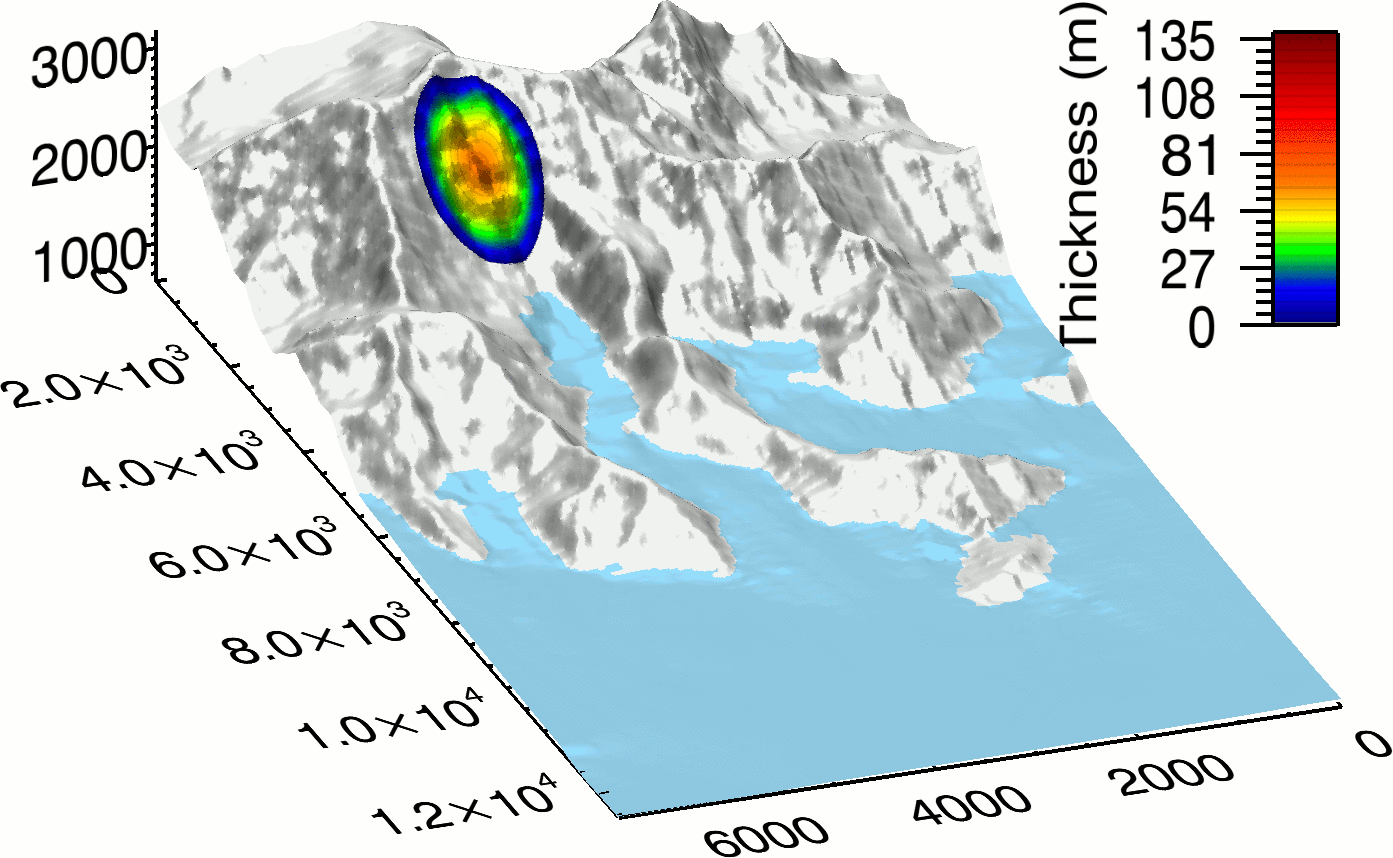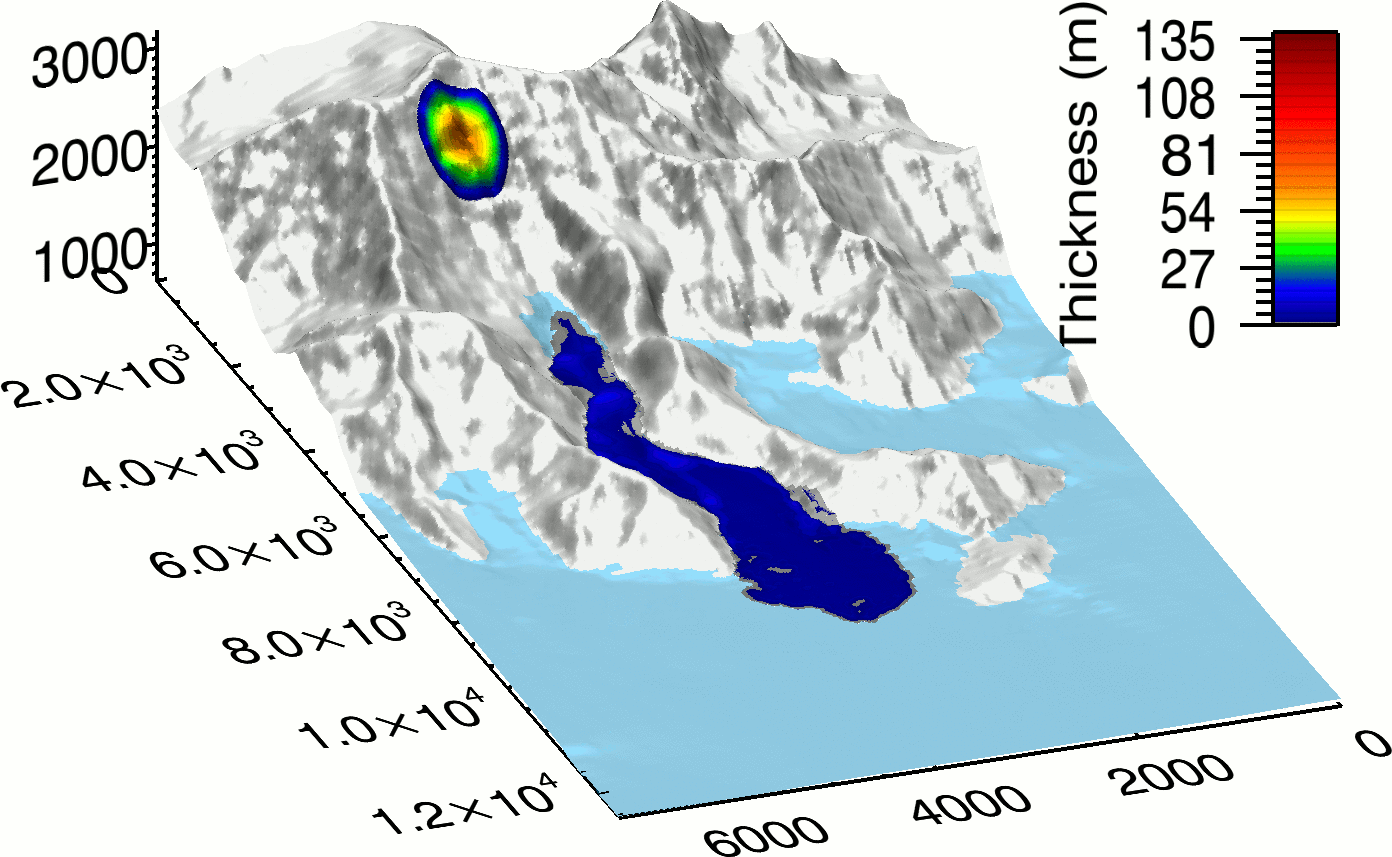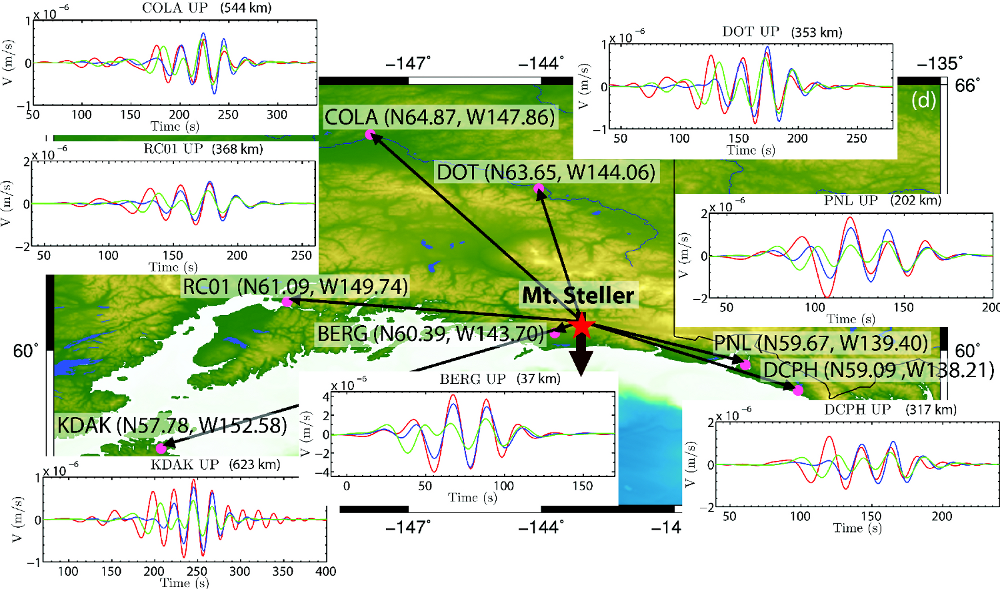
Make things as simple as possible, but not simpler. A. Einstein
LANDSLIDE GENERATED SEISMIC WAVES (LANDQUAKES)
As landslides accelerate and decelerate on their way down a slope, the forces they apply to the surface of the Earth generate seismic waves. These waves are recorded by local and even global seismic networks. The resulting seismic signals provide a unique tool to detect gravitational flows and obtain insight into their dynamics. Using a combination of numerical, experimental, seismological and geomorphological methods, our work focuses on understanding and quantifying the link between the generated seismic waves and landslide characteristics. Our aim is to allow the use of seismic data to interpret the flow dynamics and rheology of landslides.
Determining landslide flow characteristics from associated seismic signals
Favreau, P., Mangeney, A.,
Lucas, A., Crosta, G., and Bouchut, F., 2010. Numerical modeling of landquakes,
GEOPHYS. RES. LETT.,
37, L15305.
PDF Moretti, L., Mangeney, A., Capdeville, Y., Stutzmann, E., Christian Huggel, C., Schneider, D., and Bouchut, F., 2012. Numerical modeling of the Mount Steller landslide flow history and of the generated long period seismic waves,
GEOPHYS. RES. LETT.,
39, L16402. PDF
Estimating rockfall volumes from radiated seismic energy

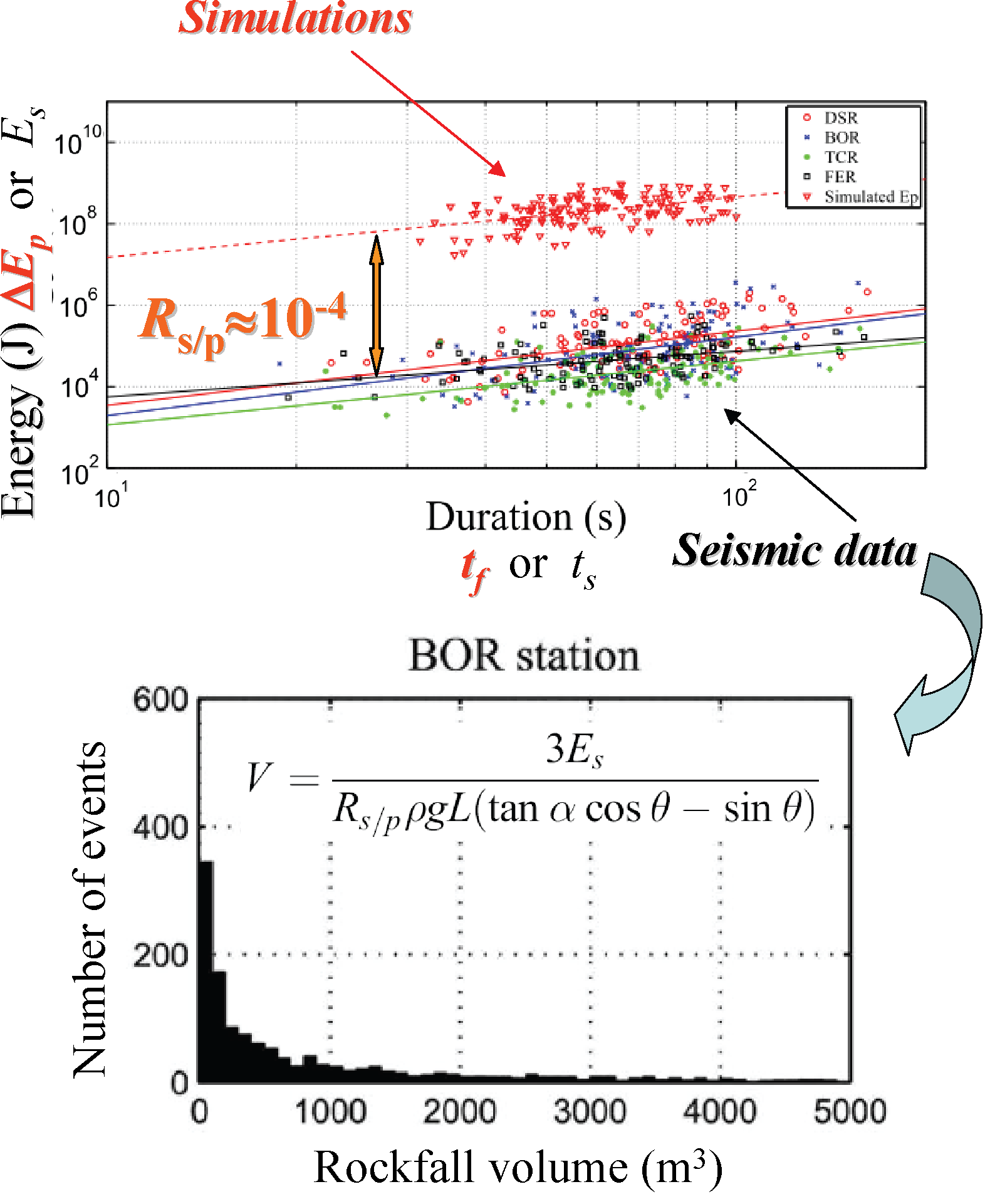 Hibert, C.
Hibert, C., Mangeney, A., Grandjean, G., and Shapiro, N., 2011. Slope instabilities in Dolomieu crater, Reunion island: From seismic signals to rockfall characteristics
J. GEOPHYS. RES. - EARTH SURFACE,
116, F04032. PDF
Measuring acoustic waves generated by experimental granular collapses
 Listening to acoustic emissions Farin, M.
Listening to acoustic emissions Farin, M., Mangeney, A., Toussaint, R., De Rosny, J., and Shapiro, N., 2013. Characterization of granular collapse onto hard substrates by acoustic emissions,
EGU Meeting,
April 2013, Vienna, Austria.
PHYSICAL PROCESSES IN NATURAL GRANULAR FLOWS
The physical processes involved in natural granular flows such as landslides, debris flows and avalanches are still poorly understood and their quantification remains a challenging problem. In particular, erosion processes and the presence of a fluid phase are known to play a key role in natural flow dynamics. However, the theoretical description of these processes, even for simple granular flows at the laboratory scale, is still an open issue. By combining theoretical, numerical, experimental and geomorphological methods, our objective is to better describe these processes in numerical models of granular flows at the laboratory and natural scale.
Demonstrating how erosion processes can increase the mobility of granular flows over sloping beds

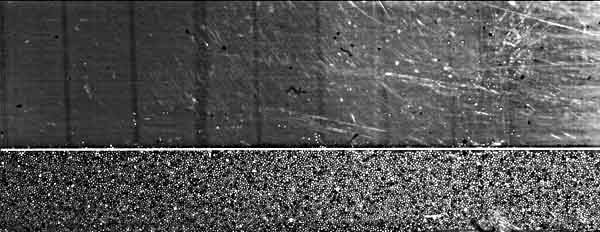

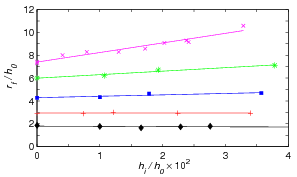
Roche, O., Niño, Y., Mangeney, A., Brand, B., Pollock, N., Valentine, G. A.,
2013. Dynamic pore pressure variations induce substrate erosion by pyroclastic flows,
GEOLOGY,
41(10), 1107-1110.
PDF; Suppl.
Farin, M., Mangeney, A., and Roche, O., 2013. Dynamics, deposit and erosion processes in granular collapse over sloping beds,
J. GEOPHYS. RES. - EARTH SURFACE,
submitted.
Mangeney, A., 2011. Geomorphology : Landslide boost from entrainment,
NATURE GEOSCIENCE,
4, 77-78. PDF Mangeney, A., Roche, O., Hungr, O., Mangold,
Faccanoni, G., and
Lucas, A., 2010. Erosion and mobility in granular collapse over sloping beds,
J. GEOPHYS. RES. - EARTH SURFACE,
115, F03040.
PDF Bouchut, F., Fernandez-Nieto, E., Mangeney, A., and Lagree, P.-Y., 2008. On new erosion models of Savage-Hutter type for avalanches,
ACTA MECHA.,
199(1-4), 181-208.
PDF Mangeney, A., Tsimring, L. S., Volfson, D., Aranson, I. S., and Bouchut, F., 2007. Avalanche mobility induced by the presence of an erodible bed and associated entrainment,
GEOPHYS. RES. LETT.,
34, L22401.
PDF
Modeling two-phase (grains/fluid) flows to better understand submarine and sub-aerial granular avalanches

Fernandez-Nieto, E., Bouchut, F., Bresch, D., Castro-Diaz, M.J., and Mangeney, A., 2008. A new Savage-Hutter type model for submarine avalanches and generated tsunami,
J. COMP. PHYS.,
227(16), 7720-7754.
PDF Pelanti, M., Bouchut, F., and Mangeney, A., 2011. A Riemann solver for single-phase and two-phase shallow flow models based on relaxation. Relations with Roe and VFRoe solvers,
J. COMPUT. PHYS.,
230(3), 515-550.
PDF Pelanti, M., Bouchut, F., and Mangeney, A., 2008. A Roe-Type Scheme for Two-Phase Shallow Granular Flows over Variable Topography, published as a
highlight paper,
MATH. MODEL. NUM. ANALY. (ESAIM:M2AN),
42, 851-885.
PDF
Simulating granular flows to understand the dynamics and deposition characteristics of Martian landslides
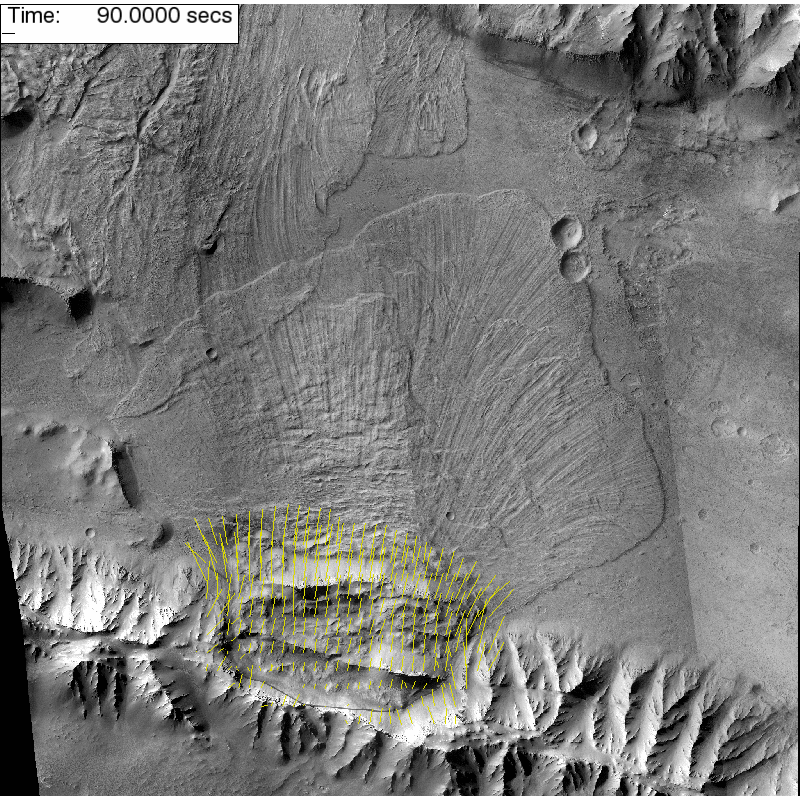
 Lucas, A.
Lucas, A., Mangeney, A., Mege, D., and Bouchut, F., 2011. Influence of the scar geometry on landslide dynamics and deposits: Application to Martian landslides,
J. GEOPHYS. RES. - PLANETS,
116, E10001. PDF Lucas, A., and Mangeney, A., 2007. Mobility and topographic effects for large Valles Marineris landslides on Mars,
GEOPHYS. RES. LETT.,
34, L10201.
PDF
Assessing the detailed morphology of sub-aerial and submarine granular flows on Earth and Mars

Cannat, M., Mangeney, A., Ondreas, H., Fouquet, Y., Normand, A., 2013. High resolution bathymetry reveals contrasting landslide activity shaping the walls of the Mid-Atlantic Ridge axial valley,
G-CUBE,
14(4), 996-1011.
PDF
Jessop, D. E., Kelfoun, K., Labazuy, P., Mangeney, A., and Roche, O., 2012. LiDAR derived morphology of the 1993 Lascar pyroclastic flow deposits, and implication for flow dynamics and rheology,
J. VOLCANO. GEOTHERM. RES.,
245-246, 81-97. PDF Mangold, N., Mangeney, A., Migeon, V., Ansan, V.,
Lucas, A., Baratoux, D., and Bouchut, F., 2010. Sinuous gullies on Mars: Frequency, distribution, and implications for flow properties,
J. GEOPHYS. RES. - PLANETS,
115, E11001.
PDF

